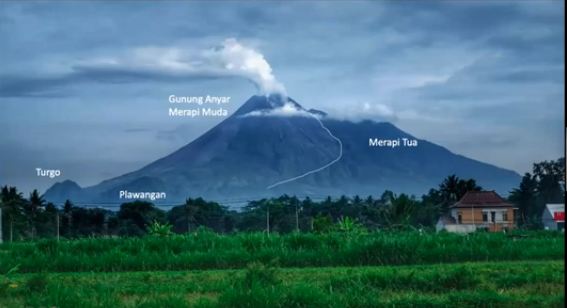
Hanik Humaida, as the Head of the Center for Geological Disaster Research and Technology Development (BPPTKG) said Mount Merapi currently showed some activities as marks of an eruption. Based on seismic data, gas output and deformation are still high, and avalanche activity increases. “These signs are getting near to the time of the eruption,” said Hanik Huamidah in a Webinar organized by UGM-Kagama entitled “Merapi Eruption, What Should We Do?” on Sunday (29/11).
However, Hanik Humaida did not mention when the eruption would probably occur. Still, she predicted that the eruption of Merapi this time would not be as explosive as the eruption in 2010. “Even if an eruption happens, it is estimated that it will not be as explosive as in 2010,” he said.
She also appealed to the people living around the Merapi area to stay alert and comply with the local government’s directions to avoid fatalities. “The community must follow directions from the local government, and do not easily believe the unclear source of information,” he said.
Ganjar Pranowo, as the Governor of Central Java, said that his party remains to coordinate with district governments in Central Java such as Magelang, Klaten, and Boyolali to anticipate the impact of the dangers of eruptions and Wedus gembel. Besides, carry the evacuation time properly, but still implementing health protocols in refugee camps to prevent Covid-19 transmission. “I believe this task is not easy. During this pandemic, refugee locations must be separated from vulnerable groups,” he said.
His party also provides disaster risk reduction mitigation arranged from the start even though he knew the residents around Merapi have their wisdom in identifying the signs when to evacuate. “We want to make sure everything is managed well. We need to contribute thoughts and provide an overview to help reduce disaster risk properly,” he said.
Dr. Agung Harijoko, as the Head of UGM Center for Disaster Studies, said that a study on the history of the eruption shows that Merapi has had explosive eruptions with sub-plinian to plinian types with large eruptions occurring in 2010 and 1872. “The recurrence period was about one hundred years,” he revealed.
Mitigation efforts are necessary to reduce the risk of the dangers of Merapi’s eruption. He mentioned the experience of the ancient Mataram kingdom in the 8th and 9th centuries, which was unable to save infrastructure such as temple buildings, which were eventually covered by eruptions. While the population at that time mostly chose to flee to the East Java area. “In the past, there was no mitigation, so eruptions covered several temples. The people back then moved to East Java to rescue themselves,” he said.
Based on his experience, the current development planning should pay attention to disaster aspects by understanding the history of eruptions and comprehending which areas are endangered by the impact of eruptions.
Meanwhile, Lilik Kurniawan, as the Deputy for Prevention of BNPB, said that the communities’ resilience around Merapi was very good. However, there should still be an assistant and support. “BNPB will do multiple responsive actions. We will be spry when there is an eruption. We have also made a list of logistics and equipment, including funding and helping hospitals’ predisposition and clinic health. We wanted to prevent victims when it erupts,” he said.
Author: Gusti Grehenson
Translator: Natasa A

